What Hi-Fi? Verdict
Seriously iffy backlighting sadly ensures that the Hisense 55A7GQ is far from the bargain it first appears.
Pros
- +
Cheap for a 55-inch TV
- +
Impressively sharp native 4K pictures
- +
Reasonable sound
Cons
- -
Poor black levels and contrast
- -
Messy upscaling
- -
Not bright enough for serious HDR
Why you can trust What Hi-Fi?
The 55A7GQ’s headline appeal couldn’t be more straightforward: it gives you 55-inches of 4K, HDR-capable pictures for just £499.
Look a little deeper, though, and the 55A7GQ actually has quite a bit more going on than mere bang for your buck. There’s also a smart system built around Hisense’s increasingly impressive VIDAA platform, support for Dolby Vision on top of the more standard HDR formats, built-in Dolby Atmos sound, and even a Quantum Dot colour system.
This does all lead to one rather big question, though: what’s the catch?
Price
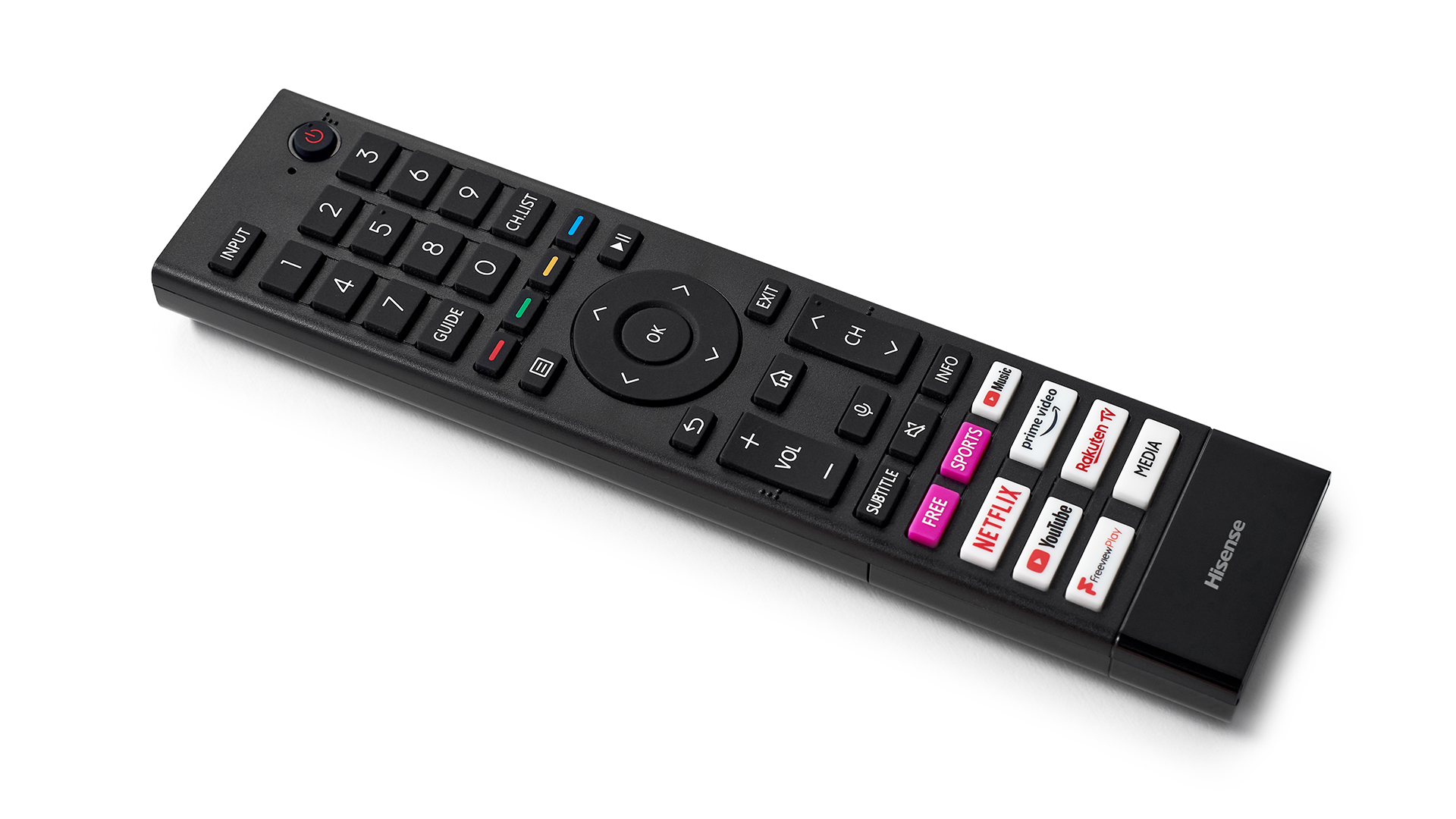
Paying just £499 for any 55-inch 4K TV is hard to resist. When that 55-inch TV also happens to offer a number of mid-range features, though, you’re in potential bargain of the year territory.
Hisense typically varies its TV range for different territories, so it’s not surprising to find no direct equivalent of the 55A7GQ available in the US. There is a Hisense A7G range in Australia, but it doesn’t enjoy the same specification. In particular, it doesn’t benefit from Quantum Dot colours.
As well as the 55-inch version under scrutiny here, the UK’s A7GQ range also contains 43, 50, 58, 65 and 75-inch models, currently priced at £379, £460, £549, £670 and £999 respectively.
Design
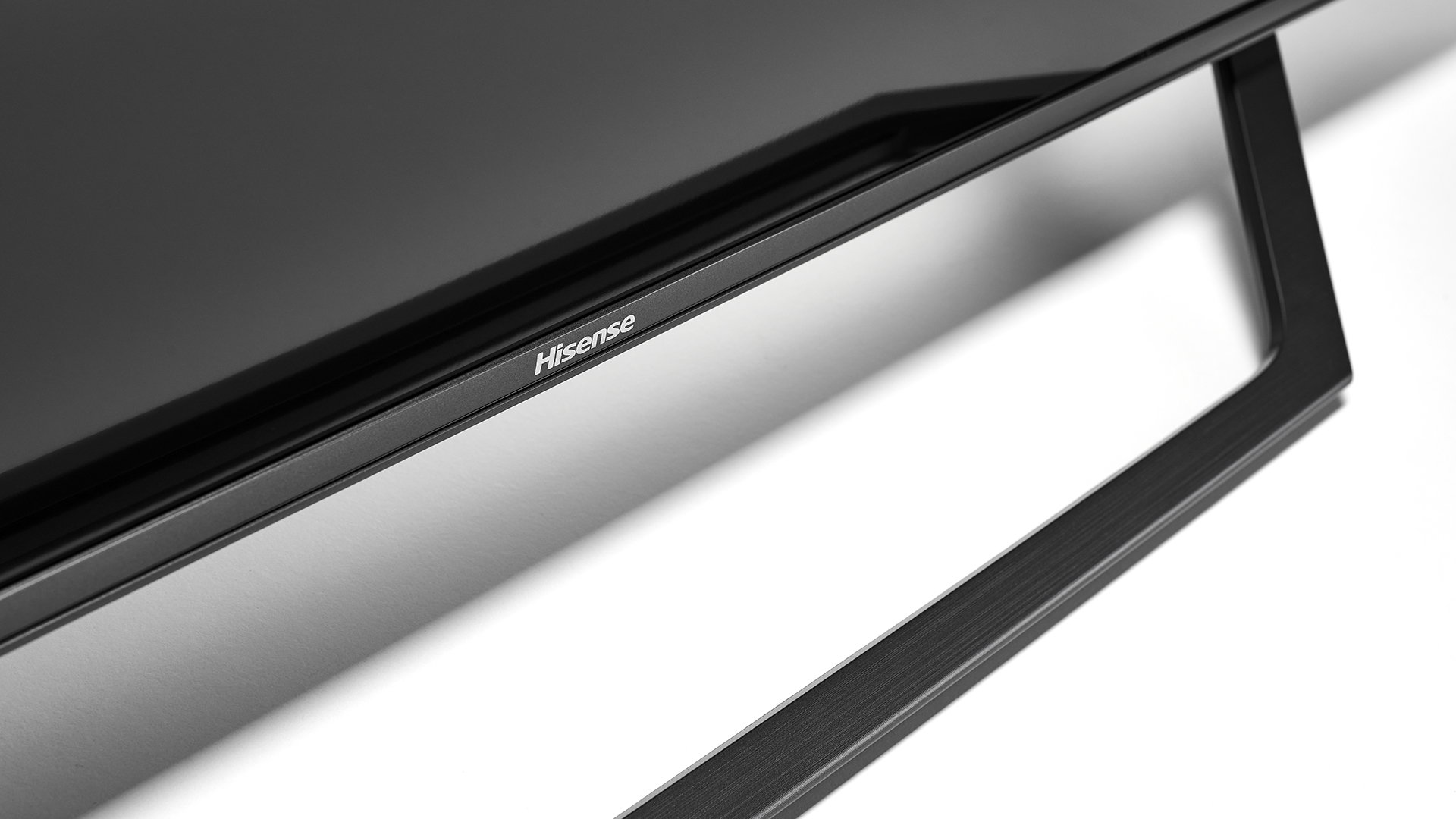
The 55A7GQ looks more expensive than it is. The bottom edge sports a smart silver, vaguely metallic-looking finish, while the other three edges are exceptionally trim and feature a black finish that again looks too polished to be bog-standard plastic. It’s a nice touch, too, that the screen sits flush with the frame.
The desktop stand also looks more metallic than it actually is, and its ’open’ style minimises the impact the TV has on your decor.
The TV is pretty lightweight even with the stand attached, alerting you to the fact that all that glitters isn’t necessarily metal – but the plastic at the build quality’s heart isn’t apparent from any sort of regular viewing distance.
The 55A7GQ is a little deeper round the back than many of today’s TVs. This is likely a function of Hisense’s promising decision to use a direct LED backlight, though, so it’s not something we’re inclined to complain about.
The 55A7GQ’s remote control is lightweight, plasticky, and more button-heavy than it probably needs to be. Most of the key buttons fall pretty easily to hand once you’ve used it a few times, though, and it’s nice to find direct access buttons provided for Youtube Music, Youtube, Netflix, Amazon Prime Video, Rakuten, and Freeview Play.
Features
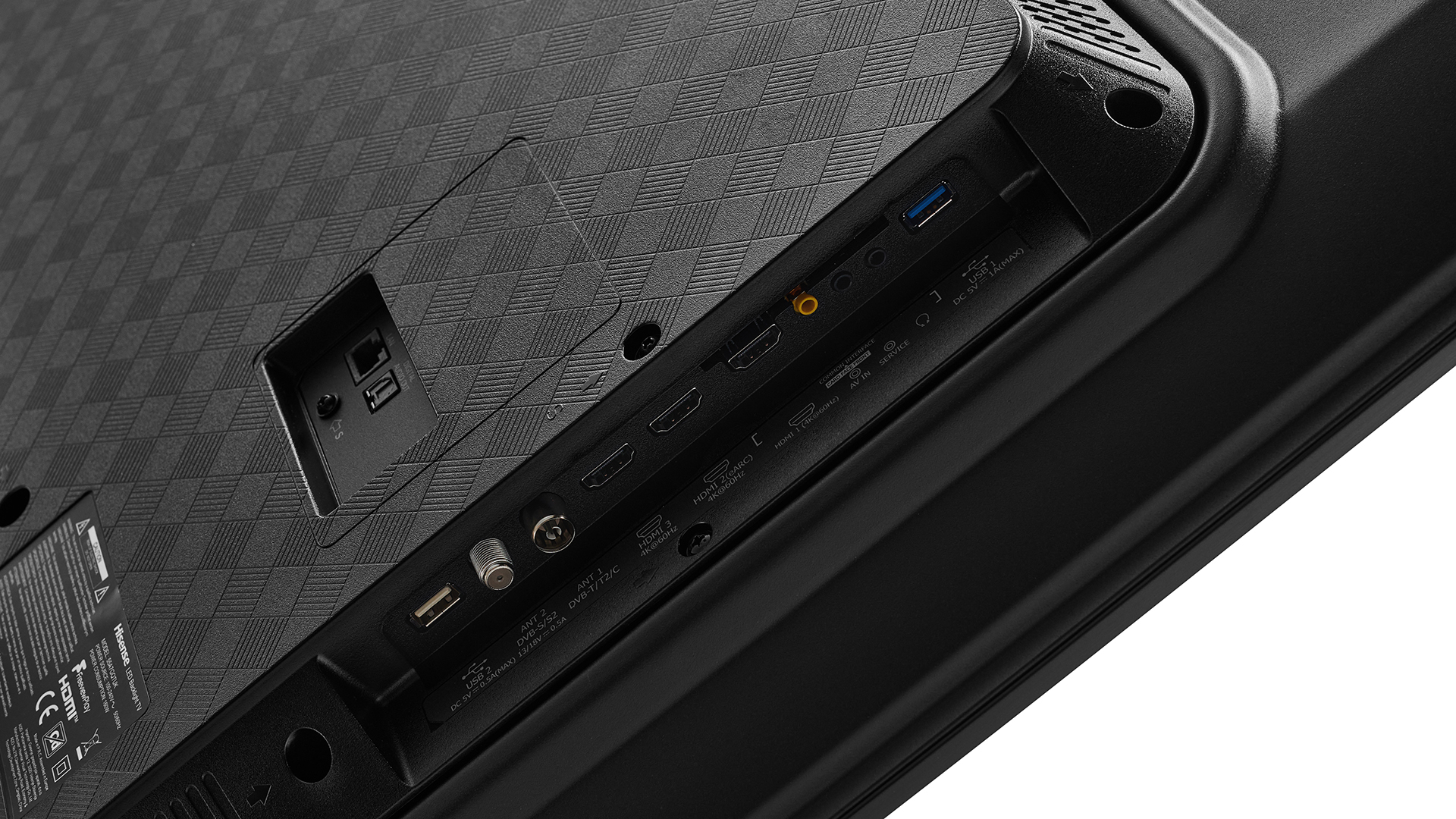
The 55A7GQ delivers a native 4K resolution and support for the HDR10, HLG and Dolby Vision high dynamic range formats. There’s no support for the HDR10+ system, but getting support for even one active HDR system (Dolby Vision) on such an affordable TV is good news.
There’s also support for a wider colour gamut than regular LCD TVs deliver, backed up by a Quantum Dot colour system. Add to all this the direct LED lighting mentioned earlier, and the 55A7GQ already seems to be punching above its price weight.
There’s no local dimming to go with the direct backlighting, though, and worryingly the set uses an IPS-style LCD panel rather than a VA one. Experience shows that while IPS screens can provide wider effective viewing angles, they tend to struggle to deliver good black levels and contrast.
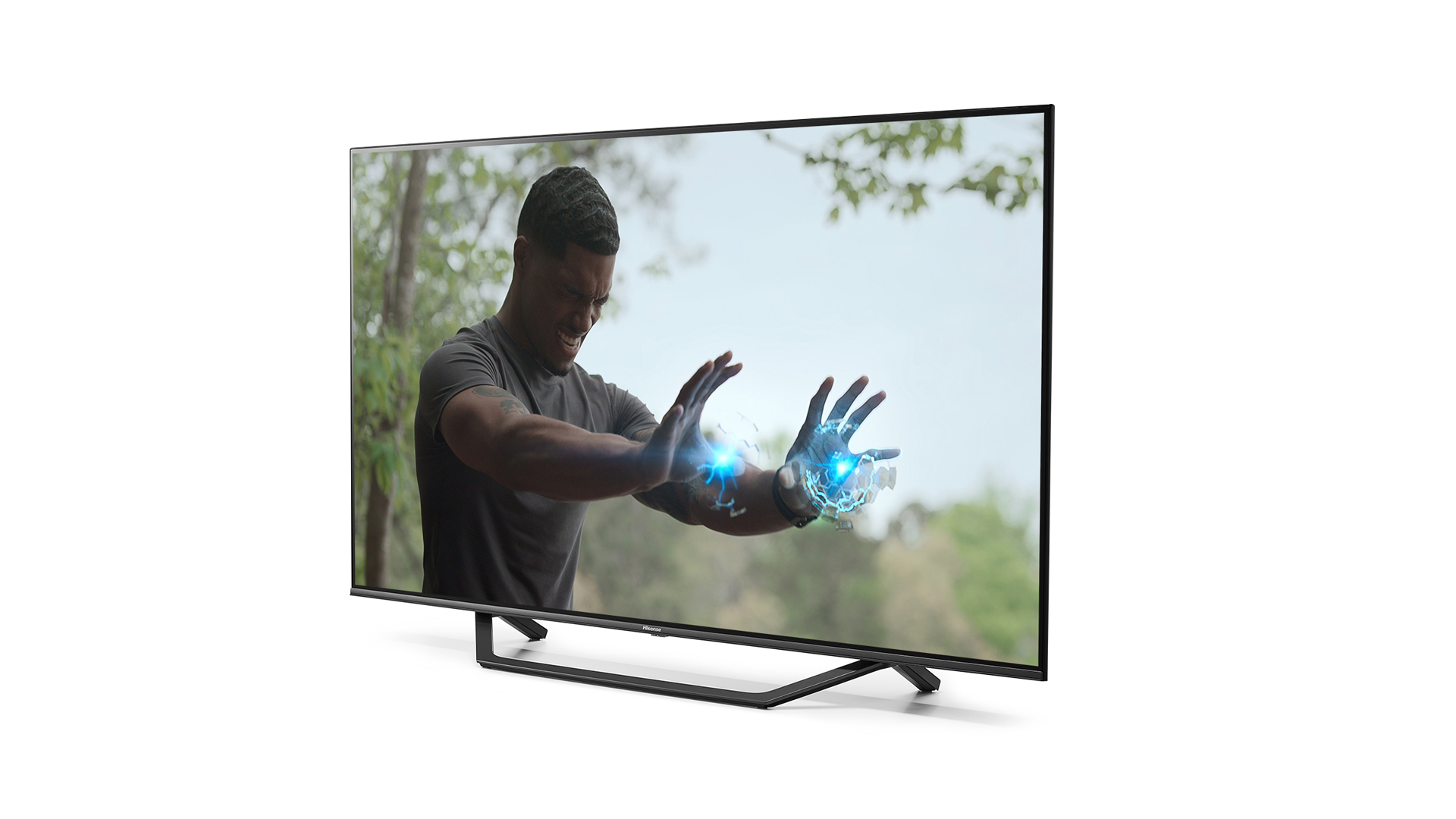
Screen type LCD w/ Direct LED backlight
Resolution 4K
Operating system VIDAA
HDR formats HDR10, Dolby Vision, HLG
HDMI x3
4K@120Hz No
VRR Yes
ALLM Yes
ARC/eARC eARC
Optical out Yes
Dimensions (hwd) w/o stand 71 x 123 x 7.7cm
Not surprisingly given how cheap it is, the 55A7GQ doesn’t support 4K/120Hz gaming. Its trio of HDMIs do, though, unexpectedly handle variable refresh rates (up to 60Hz) and non HDR 1080p at 120Hz – despite the screen only using a 60Hz panel. Obviously a 60Hz screen can’t actually render all of those 120Hz frames, but the compatibility ticks a box.
Continuing the gaming discussion, the 55A7GQ’s HDMIs support ALLM (Automatic Low Latency Mode) switching with compatible devices (such as the Xbox Series X), and when switched into its dedicated Game picture preset the TV delivers a very respectable 14.6ms of input lag.
Other inputs include a pair of USB ports, an optical digital audio output, an Ethernet network port and a headphone jack, along with the now inevitable Wi-Fi support.
Smart features are provided by the fifth generation of Hisense’s home-grown VIDAA system. This has evolved into a pretty effective platform these days, combining a crisp, clean layout with good responsiveness and a solid set of video streaming apps that now includes long-term absentee Disney Plus. There’s still no sign of Apple TV+, though.
Wrapping the interesting stuff up is built-in Dolby Atmos decoding supported by an eARC HDMI that can ship lossless Atmos to compatible soundbars or AV receivers.
Picture
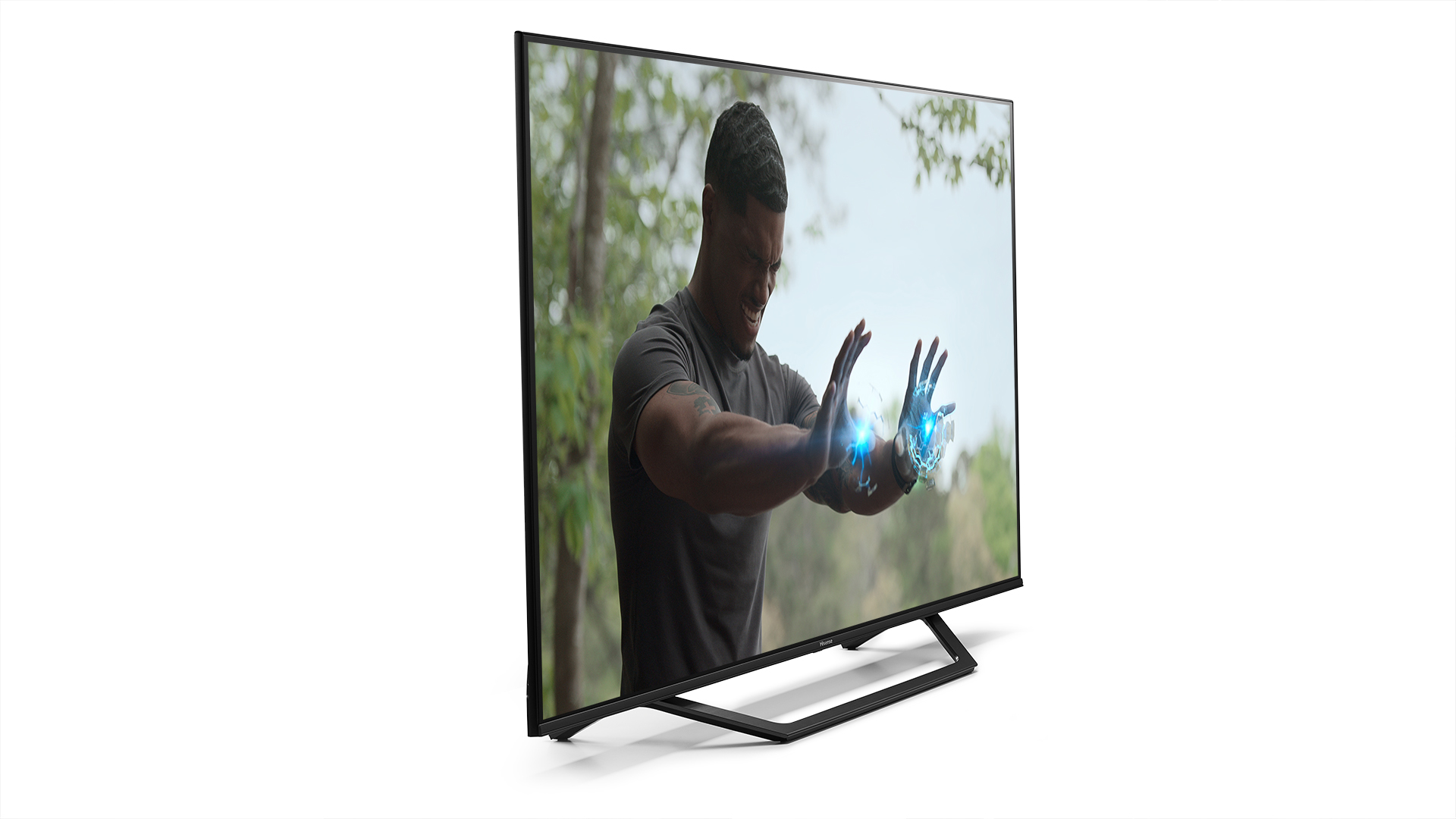
Let’s cut to the chase: the 55A7GQ’s picture quality turns out to be hugely disappointing, especially as it arrives amid a generally upward trajectory for Hisense TVs.
The main problem is a pretty devastating lack of black level response. Dark scenes appear behind a wash of excessive greyness that’s so severe at times that it can become hard to actually make out what’s going on in the picture. As the camera spins around Voldemort’s army amassing on a hill above Hogwarts at night in the final Harry Potter film, you’d be forgiven for thinking the Dark Lord had turned up by himself, so hard is it to make out anything else amid the unwanted greyness the 55A7GQ generates around him.
It’s not just the very darkest scenes that are spoiled by the 55A7GQ’s black level failings, either. Any shot that isn’t pretty much blazingly bright ends up having its depth flattened, its colours shifted and its contrast hammered by the cloying greyness that hangs over everything.
Hisense does provide a couple of picture tweaks we hoped might help us get a handle on things: a range of picture presets and an Adaptive Contrast mode with multiple settings. It quickly becomes apparent, though, that the black level problems are so fundamental to the 55A7GQ’s image characteristics that nothing in the picture menus really helps. The Low and Medium Adaptive Contrast settings actually make black levels worse, in fact, and while the High setting does improve black levels a fraction, the extent of the improvement is not nearly enough to class as a ‘fix’.
What’s more, the High Adaptive Contrast setting can also cause some distractingly extreme shifts in the image’s baseline brightness level as the TV tries in its rudimentary way to boost black levels by automatically adjusting the backlighting in response to an ongoing analysis of image content. This system is so sluggish and heavy handed with its responses that if anything it just makes the contrast situation even worse.
When it comes to the picture presets, the HDR Day and Night presets actually look worse than the default Standard setting. This is because they reduce the intensity of bright image highlights, leaving you with fewer distractions from the grey mush elsewhere.
The only thing that really made a significant difference to the 55A7GQ’s black level woes was reducing the backlight setting to pretty much zero. As you can imagine, though, this leaves images looking so dark and dull that they’re as tough to watch in their own way as the greyed-over out-of-the-box images are.
It might have been easier to forgive the 55A7GQ’s black level woes if it was pumping out extreme levels of brightness. Running it side by side with a number of rival screens, though, confirms that it’s actually delivering peak brightness levels only in line with other budget sets, and substantially lower than those pushed out by most mid-range sets.
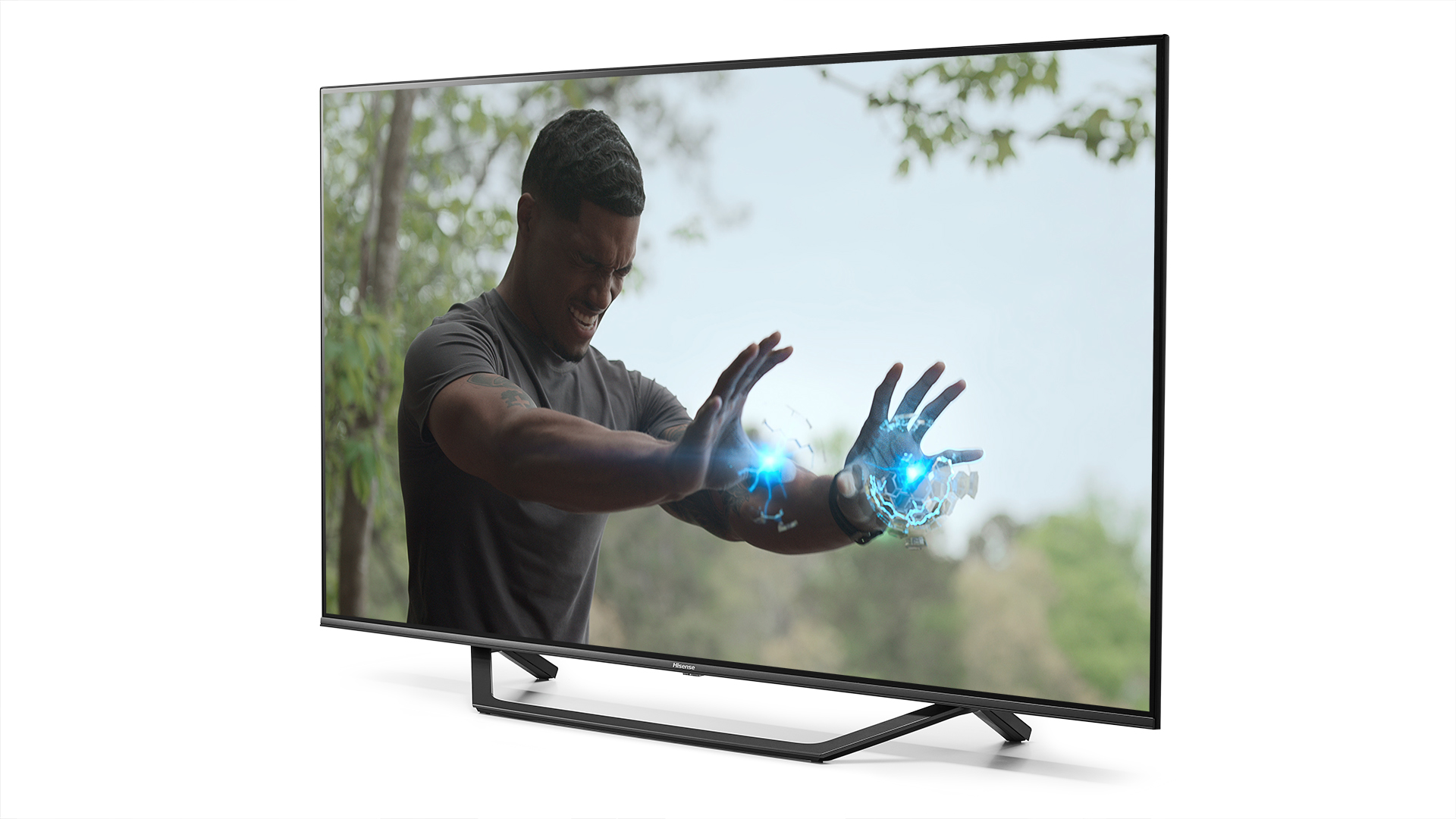
The 55A7GQ’s limited brightness levels would limit its abilities with HDR images even if its black levels were decent. By the time you’ve combined the limited brightness with the 55A7GQ’s lack of black level depth, though, you’ve got HDR images that scarcely look HDR at all.
In fact, our main takeaway from playing HDR on the 55A7GQ is that it tends to make black levels even worse.
Our guess would be that the 55A7GQ’s issues are down to a combination of its IPS panel and its budget QD colour system. Assuming we’re correct on this, it’s ironic that the IPS panel doesn’t even seem to deliver the viewing angle advantage we’d normally expect such a panel to provide. Contrast clearly becomes even worse if you watch the 55A7GQ from even a slight angle.
Although the 55A7GQ is damaged beyond repair by its sub-standard black level performance, we tried to peer through the greyness to see what else is going on. And unfortunately we spotted a couple more problems. First, despite the general high levels of greyness lying over the picture, you can still sometimes see a ‘border’ of extra brightness around an inch wide running right around the image’s edges. A few other less specific areas of backlight clouding crop up from time to time, too.
Second, the 55A7GQ’s upscaling of sub-4K sources is rather basic. On the upside, the upscaling does quite well at making pictures look sharp, adding eye-catching emphasis and definition to lines, edges and textures. Unfortunately though, the upscaling seems to make little if any effort to distinguish source noise from real image information, and so ends up sharpening and emphasising noise as well as ‘real’ image information. It also tends to over-exaggerate grain.
The 55A7GQ avoids a complete picture quality wash-out on three fronts. First, its native 4K pictures are impressively sharp and crisp. This remains reasonably if not brilliantly intact when there’s motion in the frame, too, thanks to minimal judder and surprisingly little blurring and resolution loss if you call up the set’s decently effective Clear Motion setting.
Second, while the 55A7GQ’s colours are routinely impacted by the screen’s inescapable grey overwash, there’s enough subtlety in the way blends and tones are presented to reveal that the TV’s core colour processing is pretty good, in keeping with other Hisense TVs we’ve seen recently.
Third, the 55A7GQ’s black level and brightness limitations seem much less damaging with game graphics than they are with video – especially if you’re gaming in SDR rather than HDR. Contrast looks better, and colours look richer and more credible. The clean, precise, defined nature of gaming graphics suits the screen’s knack for detailing and sharpness, too, while motion remains decently clean even in the processing-light game mode.
In the end, though, while it’s a relief to find the 55A7GQ getting a few picture points right, those positives don’t get close to overcoming the problems elsewhere.
Sound
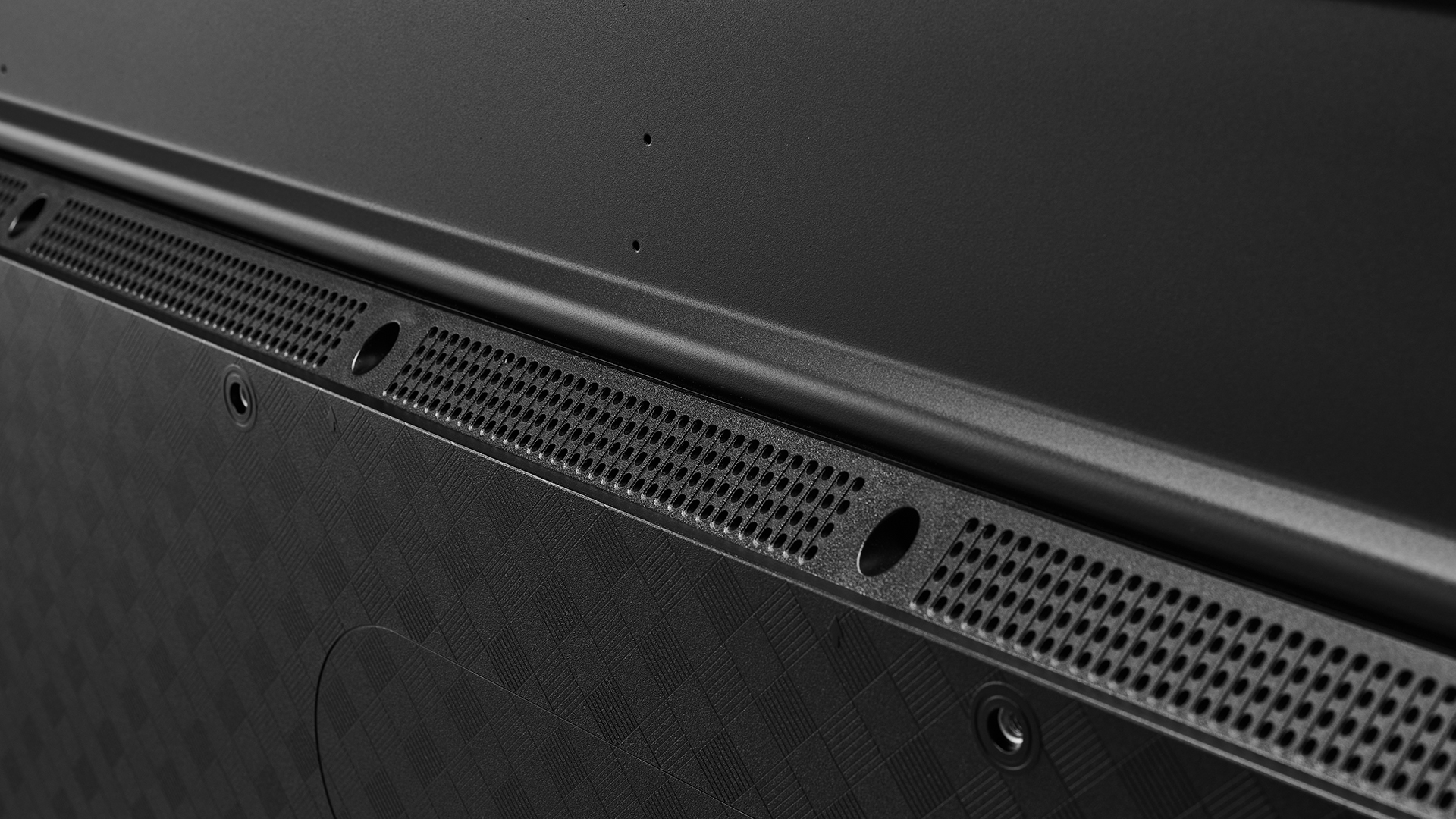
The 55A7GQ’s audio is much more satisfying than its picture quality, though that’s not saying much. Sound is relatively crisp, detailed (especially with Dolby Atmos soundtracks), clean, and able to go reasonably loud without succumbing to such nasties as cabinet buzzing or low-frequency distortions.
Heavy bass lines can sound muffled amid a lack of really deep low-frequency extension, while highs occasionally land a bit harshly during particularly dense soundtrack moments. The mid-range is wide and dynamic enough, though, to keep you involved in even pretty epic movie soundtracks, despite the speakers not managing to project the sound any great distance to the left, right or forwards of the screen.
Verdict
Hisense’s recent strong run of form comes to a shuddering halt with the 55A7GQ. Any good work this TV musters is completely overwhelmed and undermined by a contrast performance so poor that dark or even mid-bright scenes never look remotely convincing. In fact, it’s sometimes hard to even make out what’s going on.
While the 55A7GQ is cheap for a 55-inch TV, this is definitely one of those times where a low price doesn’t automatically equate to great value.
- Picture 2
- Sound 3
- Features 4
MORE:
Read our Samsung UE43AU7100 review
Also consider the Toshiba 50UK3163DB
What Hi-Fi?, founded in 1976, is the world's leading independent guide to buying and owning hi-fi and home entertainment products. Our comprehensive tests help you buy the very best for your money, with our advice sections giving you step-by-step information on how to get even more from your music and movies. Everything is tested by our dedicated team of in-house reviewers in our custom-built test rooms in London, Reading and Bath. Our coveted five-star rating and Awards are recognised all over the world as the ultimate seal of approval, so you can buy with absolute confidence.
-
captainw Important detail: the 4 core mini jack to RCA adaptor for the composite input on these TVs is not the same as for computer, phone or camcorder. It has a longer shank nearest the sleeve (connection 4). If not included with the TV, you can get one from ebay.Reply

